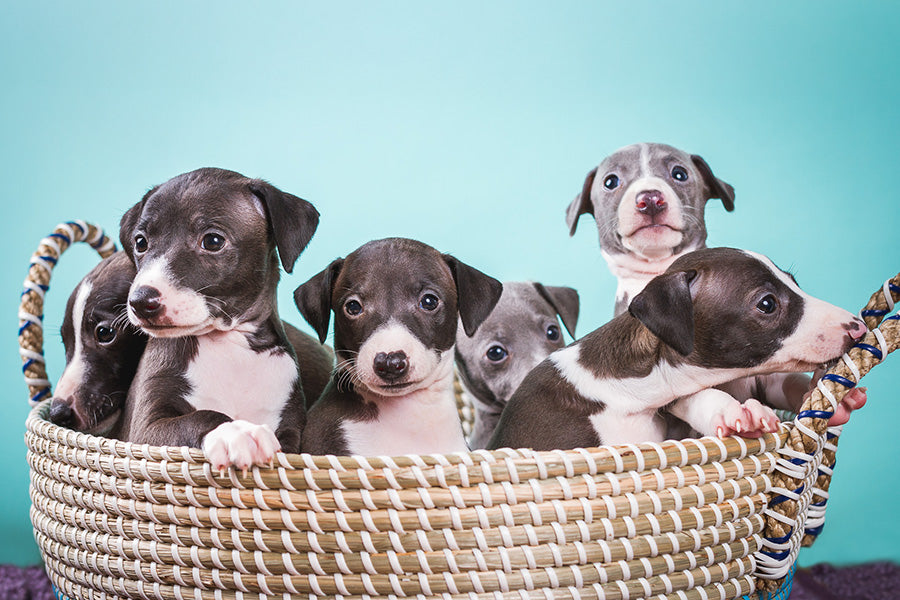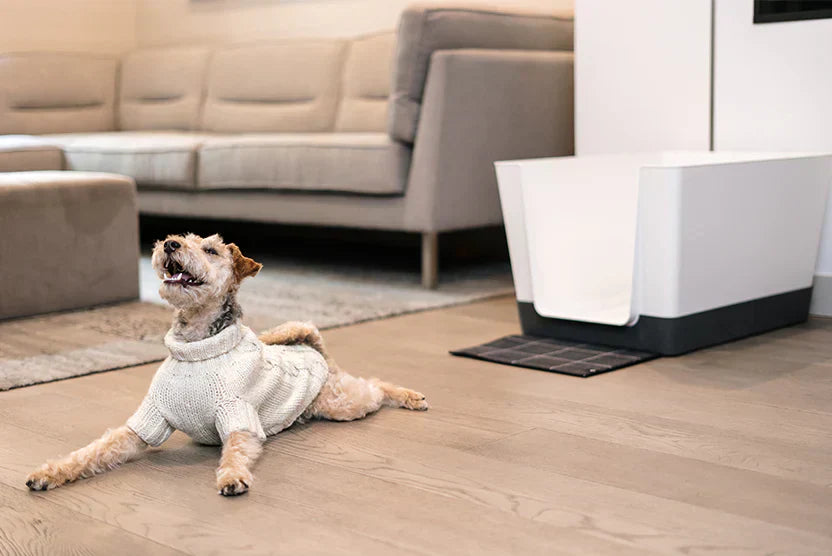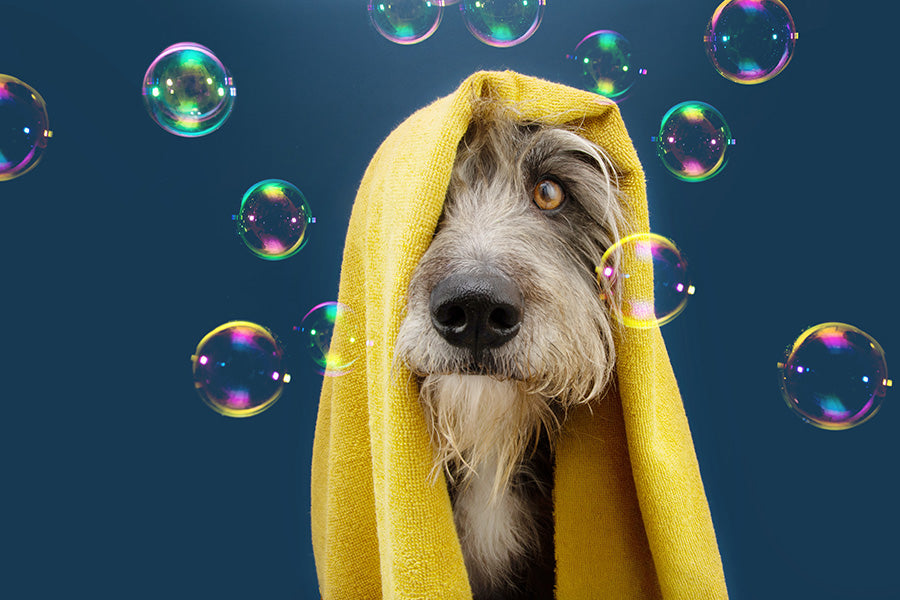Avoid Mistakes in Small Dog House Training

House training a small dog is one of the most important milestones for pet owners.
It might be a challenging process, but it also offers a chance to build a trusting and loving bond with your furry friend.
Small dogs have unique needs that require tailored approaches, especially when it comes to dog toilet training. Knowing these needs and staying away from common mistakes can help make the process easier and more successful.
Let's examine these issues and provide some simple solutions. We will also highlight how new products, such as the Doggy Bathroom, can benefit pet owners in Canada.

Understanding the Unique Needs of Small Dogs
Small dogs, such as Chihuahuas, Pomeranians, and Italian Greyhounds, bring joy with their adorable size and big personalities.
However, their small size means there are some special things to think about when house training them.
For one, their tiny bladders mean they cannot hold their pee for as long as larger breeds. This makes frequent potty breaks a necessity, particularly during the initial training phase. On top of that, many small breeds are prone to anxiety or nervousness, which can sometimes result in accidents.
Canadian winters add another layer of complexity. Cold weather, snow, and ice can make it hard for small dogs to go outside to relieve themselves comfortably. It can be tough for them in those conditions.
This is where an indoor potty solution, like the Doggy Bathroom, becomes invaluable. It provides a clean, warm, and safe space for your dog to relieve themselves without the discomfort of braving harsh weather conditions. Small dogs have special traits that affect how they learn. This goes beyond just their physical needs.
Breeds like Dachshunds and Yorkies can be famously stubborn, requiring extra patience and positive reinforcement.
Knowing these personality traits helps you adjust your training method for better results.
Building a Strong Foundation with Routine
Consistency is key when it comes to house training any dog, but it’s especially important for small breeds. Start by establishing a daily routine that includes set feeding times, regular potty breaks, and play sessions. Feeding your dog at consistent times each day helps regulate their digestion and makes their bathroom habits more predictable.
Take your dog to their designated indoor dog bathroom area first thing in the morning, after meals, and before bedtime. If you’re using the Doggy Bathroom as an indoor solution, guide your dog there at these times. Pair this routine with verbal cues like “go potty” or "Doggy Bathroom" to help your dog associate the words with the action. Over time, they’ll learn to understand what’s expected of them.
Recognizing the Signs Your Dog Needs to Go
It is important for dog owners to learn how to read their dog's body language. This is probably one of the best puppy potty training tips. Dogs are not the only ones who need to learn a new skillset.
Common signs include sniffing the floor, circling, whining, or pacing restlessly. Some dogs may head towards the door or pause during playtime when they feel the urge. Paying close attention to these behaviours allows you to guide your dog to the appropriate potty area promptly.
For small dogs who are being trained indoors, the Doggy Bathroom is an excellent tool for building this habit.
When you see these signs, take your dog to the indoor potty. Reward them with praise or a treat when they use it in the right place. Giving praise, treats, or affection right away will help them do the same behaviour again.

Avoiding Common House Training Mistakes
House training can be a rewarding process, but it’s easy to make mistakes along the way. Here are some of the most common pitfalls and how to avoid them:
- Inconsistent Schedules: Dogs thrive on routine, and an inconsistent schedule can confuse them. Feed and take your dog to the potty at the same times every day to establish a reliable pattern.
- Handling Accidents: Accidents happen when pets are learning. Scolding your dog after an accident will only create fear and anxiety. Instead, make sure to clean up accidents well and focus on rewarding good behaviour.
- Skipping Crate Training: Crate training is a valuable tool for house training. When used correctly, a crate can be a safe place for your dog. It helps them learn to wait to go outside until it’s time.
- Allowing Too Much Freedom Too Soon: Giving your dog access to the entire house before they’re fully trained can lead to setbacks. Keep them in a small area where you can easily watch them. As they learn and behave better, you can slowly give them more space.
- Improper Cleaning of Accidents: Even a faint scent of urine can encourage repeat accidents in the same spot. Use an enzymatic cleaner to eliminate odours completely and prevent your dog from returning to the area.
The Role of Positive Reinforcement
Using positive reinforcement is a great way to train dogs. It helps them learn better and improves their behaviour.
Whenever your dog goes in the designated potty area, immediately reward them with treats, verbal praise, or gentle petting. The goal is to make the experience enjoyable so that your dog wants to repeat it.
It’s equally important to be patient and understanding. Small dogs are sensitive and harsh puppy potty training methods will take away their confidence. By focusing on encouragement and rewards, you’ll build a stronger bond with your pet while teaching them good habits.
Celebrating Small Victories
Every milestone in the house training journey is worth celebrating. The first time a dog goes a full day without accidents is a big milestone in potty training small dogs.
Noticing these moments helps encourage good behaviour and makes potty training easy and fun for you and your dog. Small celebrations, like offering a favourite treat or extra playtime, show your dog that they’ve done something wonderful.
The Benefits of the Doggy Bathroom
For pet owners in Canada, the Doggy Bathroom makes hassle-free potty training small dogs much easier. Its vertical pee pads are especially helpful.
This indoor potty solution is designed for small dog breeds. It helps dogs that struggle with outdoor potty training because of bad weather or other challenges.
The Doggy Bathroom has special vertical pee pads designed for male dogs that lift their legs. This helps keep things cleaner and more hygienic.

Its splash guards and absorbent pads keep messes contained, while its compact size makes it ideal for apartments, condos, and other small spaces. It’s also perfect for multi-dog households, providing a convenient solution for everyone.
One of the standout features of the Doggy Bathroom is its ability to transition seamlessly into outdoor potty training.
Once your dog feels comfortable with the indoor setup, you can slowly start taking them outside for breaks. Just be sure to use the same cues and rewards as before.
This makes it easier for your dog to adapt to new environments while retaining their good habits.
Adapting to Canadian Winters
House training a dog in Canada often means dealing with snow, ice, and freezing temperatures.
Small dogs can find cold weather challenging. They are more sensitive to the cold, so it's important to use gentle training methods. Many owners find it challenging to coax their pets outside for potty breaks during the winter months.
The Doggy Bathroom offers a practical solution to this problem. By providing a warm and comfortable indoor potty area, it eliminates the need for outdoor trips in harsh weather.
This helps keep your dog safe and comfortable while also supporting regular training all year round. Cold Canadian winters can cause icy and slippery sidewalks. This can be dangerous for all small dogs, young and senior.
Indoor potty training during these cold winter months ensures your dog remains comfortable, healthy, and happy.
Training Tips for Busy Schedules
Modern life can be hectic, and it’s not always easy to stick to a rigid house training schedule. If you are busy with work, family, and other tasks, here are some tips to help you stay organized while potty training your puppy:
- Set Alarms: Use your phone to set reminders for potty breaks throughout the day.
- Ask for Help: If you can, get a family member, friend, or dog walker to help with potty breaks when you're not around.
Use technology by setting up a pet camera. This lets you watch your dog's behaviour and make sure they are following their training routine.
The Doggy Bathroom can also serve as a reliable backup when you’re unable to take your dog outside. Its easy-to-clean design and absorbent pet pee pads make it a stress-free option for busy pet owners. Small dog training needs to be taken seriously, especially at the beginning.

The Psychology of House Training Small Dogs
Knowing the mental side of potty training puppies can really improve how you handle it. Small dogs usually need more emotional support than larger breeds.
Small dogs respond better to praise and gentle help instead of harsh punishment. Creating a trusting relationship is important for successful house training.
Anxiety and nervousness are common in small dogs, particularly during the early stages of puppy bathroom training. To help with these feelings, make a calm and supportive space.
Avoid sudden loud noises or abrupt movements that might startle your dog. Instead, use a soothing tone of voice and maintain a relaxed demeanour. This helps your dog feel secure and more willing to follow your guidance.
Transitioning from Indoor to Outdoor Training
Many pet owners in Canada begin by potty training their pets indoors, especially in winter. As the weather gets better, they then move to outdoor training. To make this process smooth, follow these steps:
- Start Small: Gradually introduce your dog to outdoor potty breaks while maintaining the indoor setup. This helps them adjust without feeling overwhelmed.
- Use Consistent Cues: Stick to the same verbal cues and rewards system you’ve been using indoors.
- Designate an Outdoor Spot: Choose a specific area in your yard for potty breaks to create ease and consistency.
- Be Patient: Transitioning to outdoor training takes time. Celebrate small victories and remain supportive as your dog adapts.
Tailoring Training to Living Environments
Hassle-free potty training can look different depending on your living situation. For example, people who live in apartments might depend more on indoor options like the Doggy Bathroom. Meanwhile, those with backyards can switch to outdoor potty training more easily.
Your home will have an influence on how successful your training is. If you live in a place where outdoor trips are difficult, it’s best to rely on an indoor solution.
Living in a small space with a busy lifestyle doesn’t mean you can’t house train your small dog. A product like the Doggy Bathroom ensures you have everything you need in one place.
Patience and Consistency are Key
House training small dogs in Canada can be challenging. But with the right approach, routine, and tools like the Doggy Bathroom, your dog can learn to potty in the right place.
Remember to stay patient, be consistent, and celebrate all the little victories. With the best puppy training methods, you’ll both get through the training process and build a trusting, loving relationship.
For more helpful insights and information, check out our related blog posts here:
Quick Guide: Potty Train Your Dog Fast



